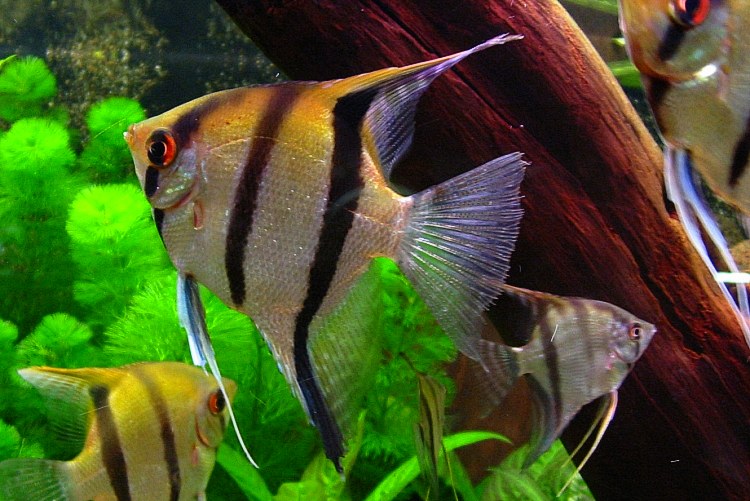Pterophyllum scalare, the species most commonly referred to as angelfish or freshwater angelfish, is the most common species of Pterophyllum held in captivity.
It is native to the Amazon Basin in Peru, Colombia, and Brazil, particularly the Ucayali, Solimões and Amazon rivers, as well as the rivers of Amapá in Brazil, the Oyapock River in French Guiana and the Essequibo River in Guyana. It is found in swamps or flooded grounds where vegetation is dense and the water is either clear or silty. Its native water conditions range from a pH of 6.0 to 8.0, a water hardness range of 5 - 13 dH, and water temperature ranging from 24 to 30 °C (75 to 86 °F).[1] This is the species of angelfish most frequently found in the aquarium trade. A similar (cross-breeding possible) P.scalare exist in the Orinocco. They are of same size and shape, the only difference are its stripes.
The Orinocco P.scalare has thinner, but dual stripes. The coloration of freshwater angelfish varies, with some having a wide range of color patterns such as strips or spots while others have a solid coloration. They have a flat, laterally compressed, triangle shaped body that tapers down towards its head. As aquarium fish, inbreeding is a problem with this fish. All strange colours are due to heavy inbreeding. In nature this cichlid is as strong as most other of its
pterophyllum scalare aquarium weight, but strong individuals are very rare to find in today's aquarium trade. Hence P.scalare shall not be kept together with other South American cichlids.



No comments:
Post a Comment